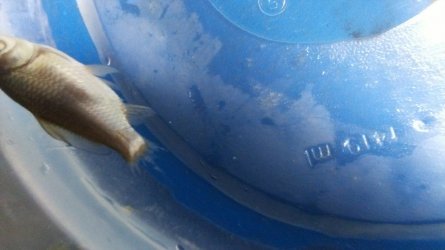How long has the fish's tail been like that?
Was the tail fine one day and missing the next?
If yes, the other fish probably ate its tail.
Bacterial, fungal and protozoan infections take more than 24 hours to dissolve a tail to that degree.
The tail does not look infected. There is no red in it (what's left of it), or around the edges so it doesn't appear to be bacterial.
The fish appears to be free of protozoan infections on the body and remaining fins so that is unlikely to be the cause. Protozoan infections show up as cream, white or grey patches on the body and sometimes fins, and the infected fish tend to rub on objects.
There is no fungus on the tail.
-----------------------
Kanaplex and Erythromycin are both strong anti-biotics that should not be used unless there is a known bacterial infection that has not responded to conventional fish medications.
Anti-biotics will kill filter bacteria and improper use or misuse can lead to drug resistant bacteria that can kill people, animals, birds and fish.
-----------------------
ParaGuard contains aldehydes and Malachite Green and is useful to treat protozoan ifnections. However, this does not appear to be a protozoan infection so should not be used.
Malachite Green is carcinogenic and you should avoid getting it on your skin. And wash hands and arms with soapy water after using any medication or working in the tank.
-----------------------
Epsom Salts (magnesium sulphate) is only useful to increase the GH a bit and help with constipation.
-----------------------
Sodium Chloride (salt) is fine to help reduce stress and treat minor bacterial, fungal and protozoan infections in fish. If you want to use it you can add some to make sure the tail doesn't get infected.
You can add rock salt (often sold as aquarium salt), sea salt or swimming pool salt to the aquarium at the dose rate of 1 heaped tablespoon per 20 litres of water. If there is no improvement after 48 hours you can double that dose rate so there is 2 heaped tablespoons of salt per 20 litres.
If you only have livebearers (guppies, platies, swordtails, mollies), goldfish or rainbowfish in the tank you can double that dose rate, so you would add 2 heaped tablespoons per 20 litres and increase it after 48 hours if there is no improvement so there is a total of 4 heaped tablespoons of salt per 20 litres.
Keep the salt level like this for at least 2 weeks but no longer than 4 weeks otherwise kidney damage can occur. Kidney damage is more likely to occur in fish from soft water (tetras, Corydoras, angelfish, gouramis, loaches) that are exposed to high levels of salt for an extended period of time, and is not an issue with livebearers, rainbowfish or other salt tolerant species.
The salt will not affect the beneficial filter bacteria but the higher dose rate will affect some plants. The lower dose rate will not affect plants.
After you use salt and the fish have recovered, you do a 10% water change each day for a week. Then do a 20% water change each day for a week. Then you can do bigger water changes after that.
-----------------------
Check the water quality for ammonia, nitrite, nitrate & pH.
Do a 75% water change and gravel clean the substrate. Wipe the inside of the glass down and clean the filter if it hasn't been done in the last 2 weeks.
Add salt and monitor the fish over the next 2 weeks.
As long as the tail doesn't get infected it should heal up without any problems and grow back over the next month or so.
Keep the fish away from other fish for a couple of weeks to let it recover in piece.
-----------------------
If you turn your phone on its side so it is horizontal, the video will fill up the entire screen rather than only using the middle section for the footage





